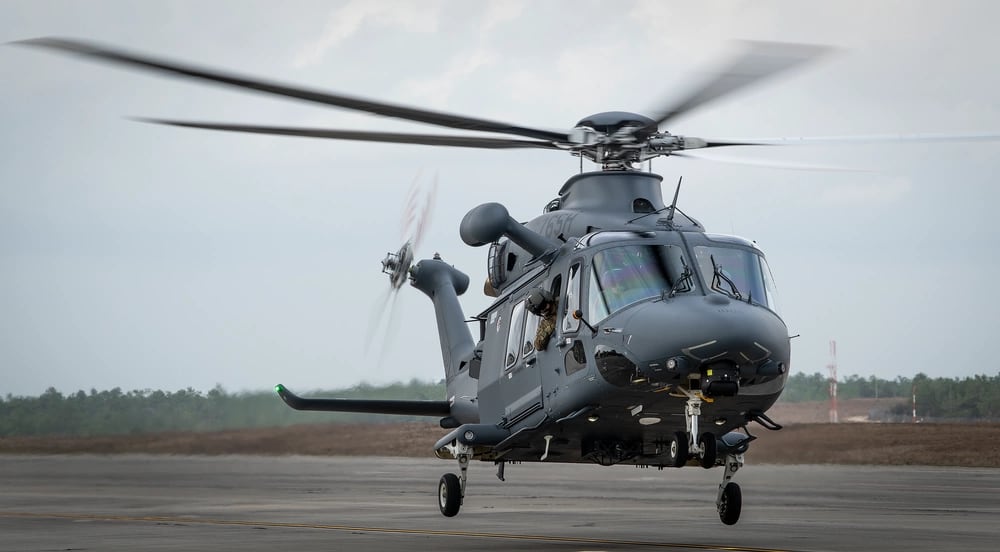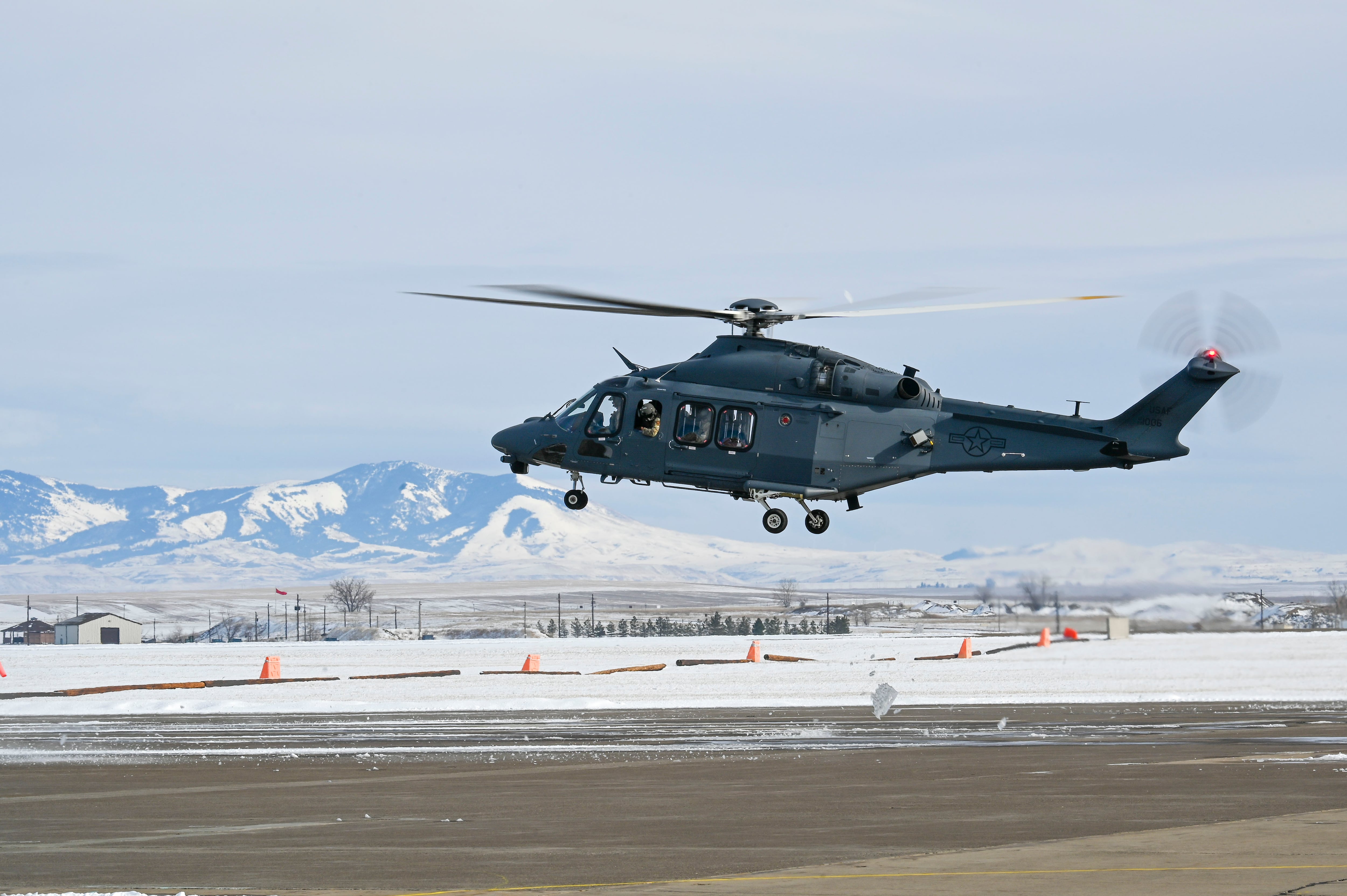The Air Force’s newest helicopter has reported for duty.
The first field-ready MH-139 Grey Wolf arrived at Montana’s Malmstrom Air Force Base earlier this month, marking the start of operations for a new fleet of aircraft designed to safeguard America’s land-based nuclear missiles.
RELATED

The Grey Wolf will be used to patrol the intercontinental ballistic missile fields at Malmstrom; F.E. Warren AFB, Wyoming; and Minot AFB, North Dakota. It replaces the UH-1N Hueys that entered service in 1970.
The 341st Missile Wing filmed Malmstrom’s first Grey Wolf touching down on base March 5. Officials from Air Force Global Strike Command, which manages the service’s nuclear enterprise, and the helicopter community celebrated the milestone at a March 9 ceremony.
“Today we begin a new era in ICBM security,” 582nd Helicopter Group Commander Col. Philip Bryant said at the Malmstrom event.
“You will convert from the Huey to the Grey Wolf at a rapid pace. … You will not have the luxury to pause the mission,” he told airmen. “Embrace that challenge. You have an opportunity that few Air Force aviators and few defenders receive, so make the most of it.”
Bringing on the MH-139 is one piece of the Air Force’s multibillion-dollar modernizations of its nuclear weapons, the aircraft that carry them and the assets to safeguard them.
The Air Force says the Grey Wolf can cruise 50% faster and farther than the Huey, with a 30% larger cabin and the ability to lift an additional 5,000 pounds.
Airmen received the initial test airframe in 2019; the service activated its Grey Wolf training unit at Maxwell AFB, Alabama, in January.
Though the service had originally planned to purchase as many as 84 helicopters from Boeing under a $2.4 billion production contract, it now expects to drastically shrink that buy to 36 operational airframes.
According to Air Force budget documents, the service has enough money for 42 helicopters, training devices and other support equipment. Six of those are test airframes that have already been delivered.
Andrew Hunter, the Air Force’s civilian acquisition chief, told reporters March 12 that while the service plans to replace the nuclear enterprise’s helicopters, it will no longer use them for secondary missions like VIP transport and search-and-rescue operations.
The cut means Joint Base Andrews, Maryland; Fairchild Air Force Base, Washington; and Yokota Air Base, Japan, will go without helicopters once their Hueys are retired.
“We had anticipated also fielding to replace aircraft in other locations not associated with Global Strike,” Hunter said, according to Breaking Defense. “Those we will not be able to replace.”
Rachel Cohen is the editor of Air Force Times. She joined the publication as its senior reporter in March 2021. Her work has appeared in the Washington Post, the Frederick News-Post (Md.), Air and Space Forces Magazine, Inside Defense, Inside Health Policy and elsewhere.




